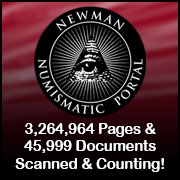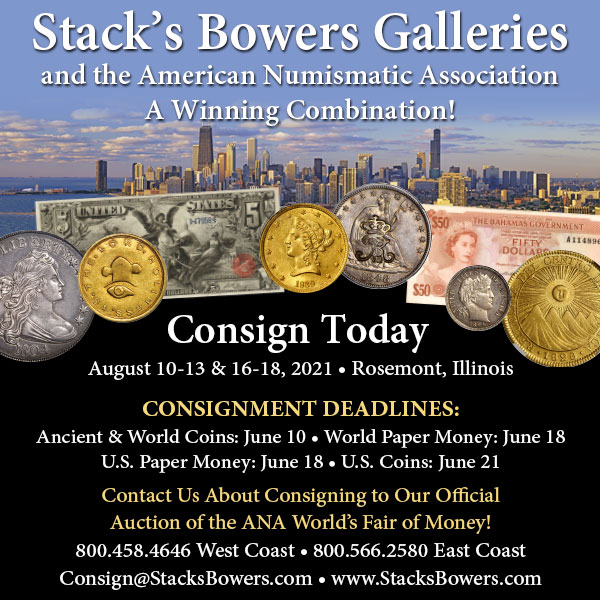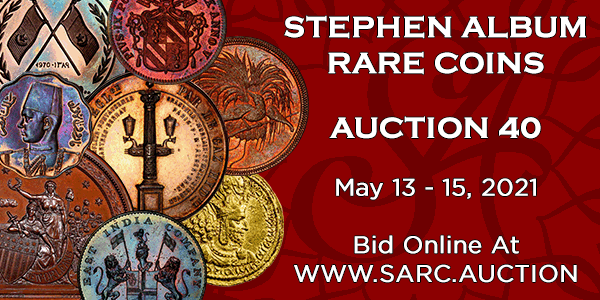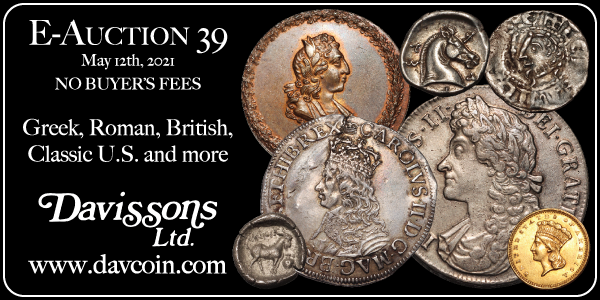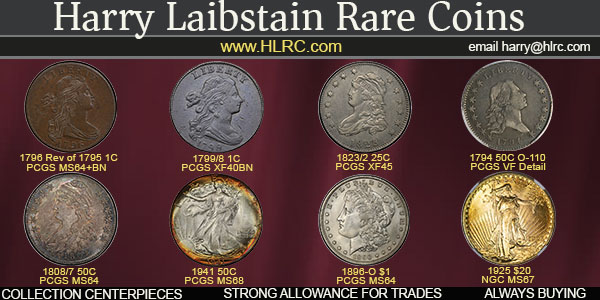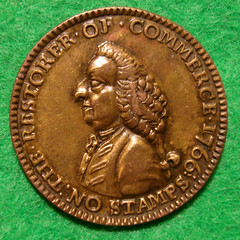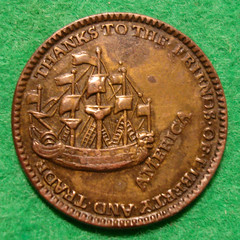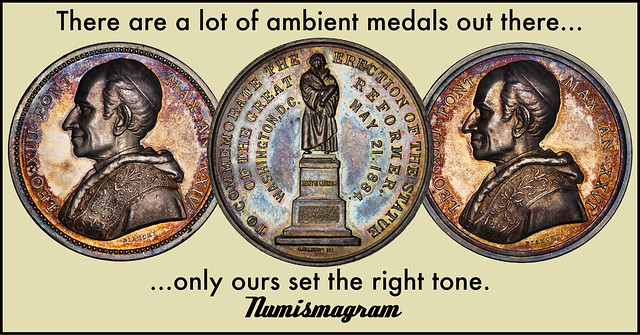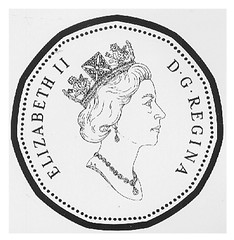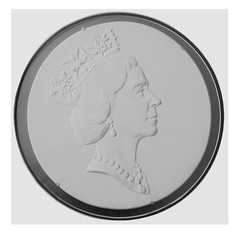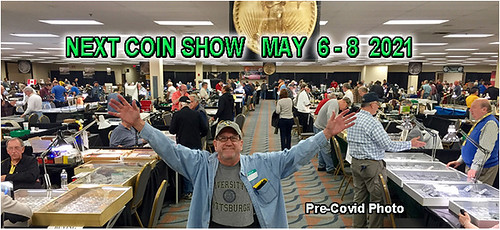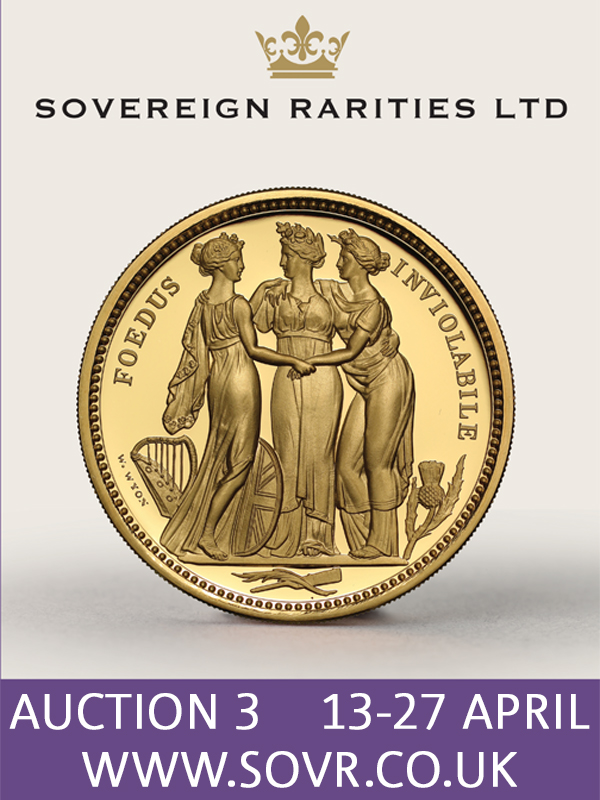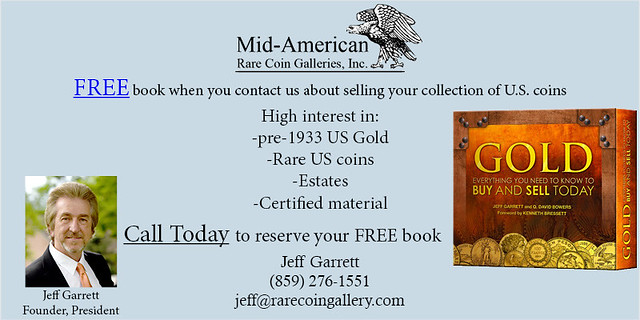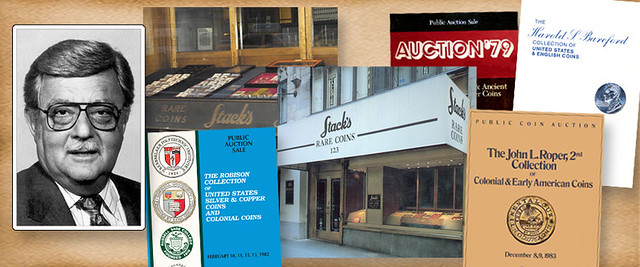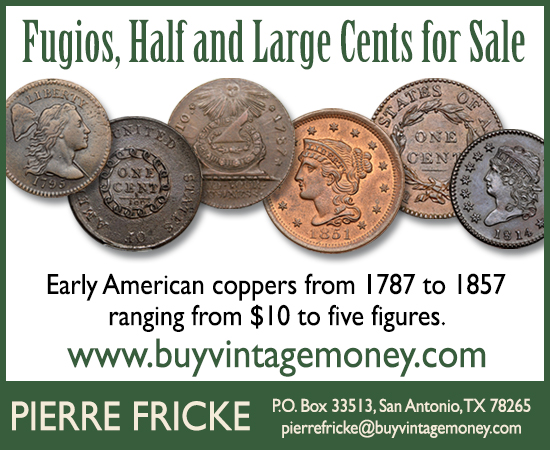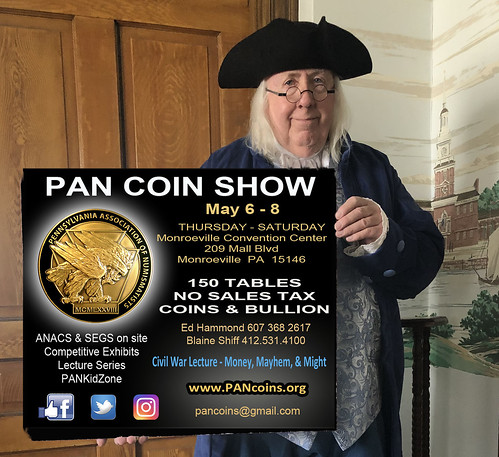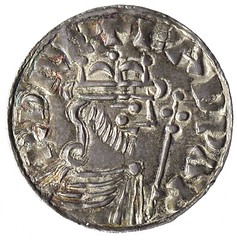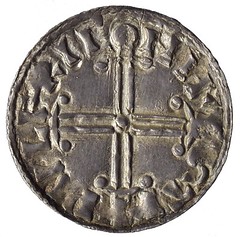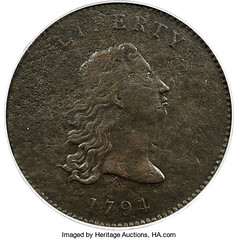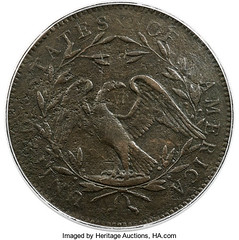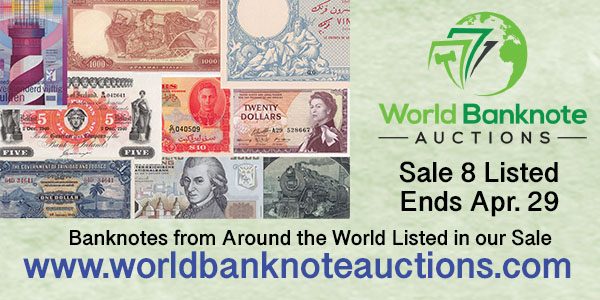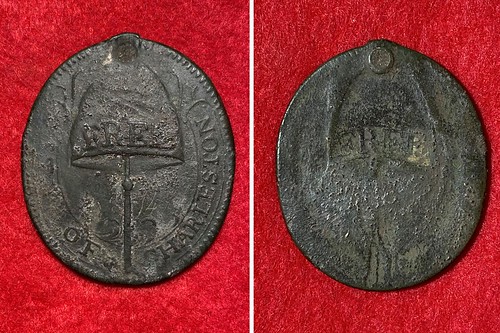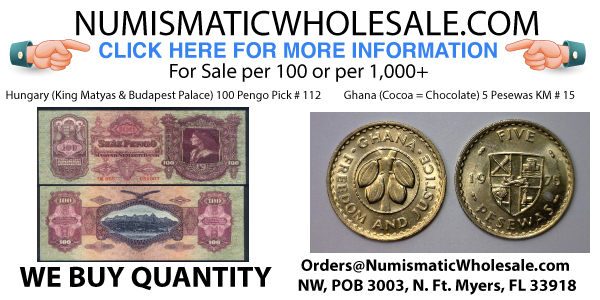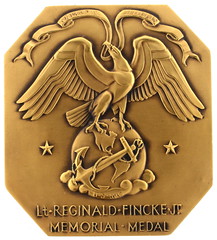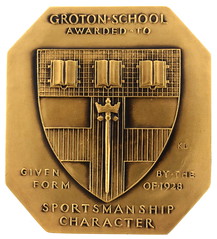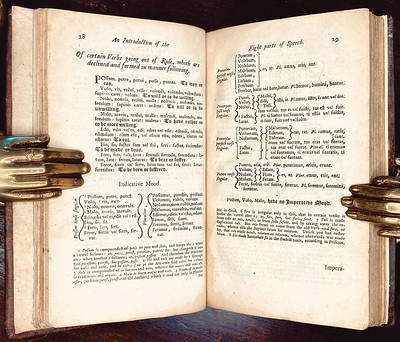
Visit our NBS Sponsors


|
About Us
The Numismatic Bibliomania Society is a non-profit association devoted to the study and enjoyment of numismatic literature. For more information please see our web site at coinbooks.org SubscriptionsThose wishing to become new E-Sylum subscribers (or wishing to Unsubscribe) can go to the following web page link MembershipThere is a membership application available on the web site Membership Application To join, print the application and return it with your check to the address printed on the application. Print/Digital membership is $40 to addresses in the U.S., and $60 elsewhere. A digital-only membership is available for $25. For those without web access, write to: Charles Heck, Treasurer AsylumFor Asylum mailing address changes and other membership questions, contact Chuck at this email address: treasurer@coinbooks.org SubmissionsTo submit items for publication in The E-Sylum, write to the Editor at this address: whomren@gmail.com BUY THE BOOK BEFORE THE COINSale Calendar
|
- WAYNE'S WORDS: THE E-SYLUM APRIL 25, 2021
- KOLBE & FANNING BUY OR BID SALE NUMBER 15
- NEW BOOK: 2022 HANDBOOK OF U.S. COINS
- NEW BOOK: EMPIRES & MONEY
- SASKATCHEWAN TRADE TOKEN WORK EVOLUTION
- EDWARD LOUIS DENCE (1917-2021)
- WILLIAM JON MCKIVOR (1940-2021)
- CONDITION CENSUS PITT FARTHING DISCOVERED
- QUERY: NUMISMATIC POSTCARD PRINTER SOUGHT
- VIDEO: COLLECTORAMA COIN SHOW SECURITY
- COIN DESIGNER DORA DE PEDERY-HUNT
- J.N.T. LEVICK'S BIRTHDATE
- MAY 2021 PAN SHOW SCHEDULE
- NOTES FROM E-SYLUM READERS: APRIL 25, 2021
- QUERY: "1.G." ON MARYLAND COLONIAL NOTE
- VOCABULARY TERM: DISPLACEMENT
- GEORGE M. PARSONS (1818-1895)
- HARVEY STACK'S NUMISMATIC FAMILY, PART 94
- STEPHEN ALBUM RARE COINS AUCTION 40
- CLASSICAL NUMISMATIC GROUP AUCTION 117
- WAYNE'S NUMISMATIC DIARY: APRIL 25, 2021
- THE MOST INFLUENTIAL PEOPLE IN NUMISMATICS
- PUBLIC AND PRIVATE IN COIN PRODUCTION
- COPPER 1794 DOLLAR PATTERN PUBLICITY
- A CENTURY OF SILVER DOLLARS
- COIN FIND LEADS WAY TO TUBMAN SITE
- DETECTORIST UNEARTHS FREEDMAN'S BADGE
- MEDALLIC ART OF KATHARINE LANE WEEMS
- EXHIBIT: IN THE HEYDAY OF ENGLISH GRAMMAR
Click here to read the thin version on the web
Click here to subscribe
Click here to access the complete archive
To comment or submit articles, reply to whomren@gmail.com
Content presented in The E-Sylum is not necessarily researched or independently fact-checked, and views expressed do not necessarily represent those of the Numismatic Bibliomania Society.
WAYNE'S WORDS: THE E-SYLUM APRIL 25, 2021
 New subscribers this week include:
Steve Singer, courtesy Steve Luftig;
Joseph Hudson, and
Garrett Prenda.
Welcome aboard! We now have 6,639 subscribers.
New subscribers this week include:
Steve Singer, courtesy Steve Luftig;
Joseph Hudson, and
Garrett Prenda.
Welcome aboard! We now have 6,639 subscribers.
Thank you for reading The E-Sylum. If you enjoy it, please send me the email addresses of friends you think may enjoy it as well and I'll send them a subscription. Contact me at whomren@gmail.com anytime regarding your subscription, or questions, comments or suggestions about our content.
This week we open with a numismatic literature sale, two new books, two obituaries, updates from the Newman Numismatic Portal, and more.
Other topics this week include the PAN and Greater Cincinnati coin shows, colonial paper money denominations, collectors J.N.T. Levick and George Parsons, upcoming coin auctions, the most influential people in numismatics, silver dollars, and the Freedman's Badge.
To learn more about the Blue Book, Saskatchewan trade tokens, charge coins, Ed Dence, Bill McKivor, Pitt farthings, show security, the John L. Roper collection, the Ainos Tetradrachm, the Pan-American Building medal, the Housatonic Bank, the Judd-18 copper 1794 dollar pattern, and the medallic art of of Katharine Lane Weems, read on. Have a great week, everyone!
Wayne Homren
Editor, The E-Sylum
KOLBE & FANNING BUY OR BID SALE NUMBER 15
Numismatic Booksellers Kolbe & Fanning submitted this announcement of their fifteenth "Buy or Bid Sale" which closes on April 28, 2021. Good luck, everyone! -Editor
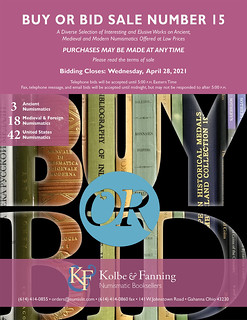 Kolbe & Fanning Numismatic Booksellers have announced our fifteenth "Buy or Bid Sale," which begins now and will close on Wednesday, April 28, 2021. With hundreds of new additions, the sale focuses on modestly priced books, giving collectors an opportunity to add to their libraries at minimal cost.
Kolbe & Fanning Numismatic Booksellers have announced our fifteenth "Buy or Bid Sale," which begins now and will close on Wednesday, April 28, 2021. With hundreds of new additions, the sale focuses on modestly priced books, giving collectors an opportunity to add to their libraries at minimal cost.
The sale includes over 1500 works on ancient, medieval and modern coins, as well as general works, periodicals and sale catalogues. "Buy" prices have been kept low to promote sales. To further encourage participation, the firm is offering free domestic shipping to bidders spending at least $300; there is also no packing and processing fee for this sale. Again, please read the Terms of Sale before participating.
As the name of the sale suggests, customers may bid on items they wish to acquire or buy them outright at the published price. The Terms of Sale will give full instructions on how to participate: please read it carefully.
THE BOOK BAZARRE
NEW BOOK: 2022 HANDBOOK OF U.S. COINS
Whitman Publishing has announced the 2022 edition of the Blue Book. -Editor
Official Blue Book of United States Coins
79th Edition Compiles Wholesale Values of All U.S. Coins
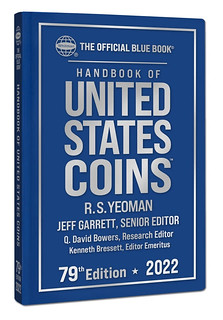 Whitman Publishing announces the upcoming release of the 2022 (79th edition) Handbook of United States Coins, popularly known as the "Blue Book." The 304-page book will debut May 10, 2021, in hardcover and softcover formats, available from booksellers and hobby shops nationwide. In the meantime, it is available for preorder (including at
www.Whitman.com and online bookstores).
Whitman Publishing announces the upcoming release of the 2022 (79th edition) Handbook of United States Coins, popularly known as the "Blue Book." The 304-page book will debut May 10, 2021, in hardcover and softcover formats, available from booksellers and hobby shops nationwide. In the meantime, it is available for preorder (including at
www.Whitman.com and online bookstores).
The Blue Book, a guide to wholesale coin values, was started by R.S. Yeoman in 1942 as a groundbreaking resource for collectors. With the Blue Book, for the first time ever hobbyists had an impartial, research-driven annual guide to tell how much the typical dealer would pay them for their U.S. coins. It also gave dealers a handy one-stop reference for making buy offers.
NEW BOOK: EMPIRES & MONEY
Howard R. Engel of Richard Stockley Books in Winnipeg, Manitoba, Canada, alerted me to an intriguing new numismatic-related book by Montreal-based author Paul Tawrell. It considers the role of money at 30,000 feet, so to speak, in the rise and fall of empires, including a timely treatment of the effects of pandemics, both past and present, on money through the ages. Here's some information from the book's web page. -Editor
Paul writes:
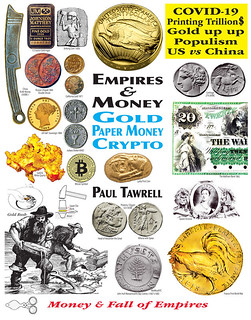 "This title covers the History of Money and reflects upon Empires that had access to gold and silver to strike coins to increase their money supply, help trade, and pay for arms and mercenaries to project power. Empire status was assured by having a stable gold:silver ratio or paper notes backed by gold coin. The use of paper notes - first issued by the Song dynasty, in China c910, and Kublai Khan's paper is covered in depth. Historically all paper notes (and debased coin) have become worthless - the question is how fast. It took 500 years for the silver Roman denarius coin to be debased.
"This title covers the History of Money and reflects upon Empires that had access to gold and silver to strike coins to increase their money supply, help trade, and pay for arms and mercenaries to project power. Empire status was assured by having a stable gold:silver ratio or paper notes backed by gold coin. The use of paper notes - first issued by the Song dynasty, in China c910, and Kublai Khan's paper is covered in depth. Historically all paper notes (and debased coin) have become worthless - the question is how fast. It took 500 years for the silver Roman denarius coin to be debased.
"Diverse historic events relating to gold, silver, coining, money, mining, banking, financial panics, epidemics, black swans, and the survival/devolution of Empires are covered.
"I had planned to attend numismatic get-togethers to display my new title, but the pandemic has closed this venue. It took over 15 years to assemble the data to write this book.
"The book has 384 pages with over 4000 images and was printed, in duotone, on coated stock to give justice to the photographs of the coins. "
SASKATCHEWAN TRADE TOKEN WORK EVOLUTION
Howard R. Engel of Richard Stockley Books in Winnipeg, Manitoba, Canada submitted these notes on important references on Saskatchewan trade tokens that came out of his desire to meet the numismatic literature needs of one of his customers. Thanks! -Editor
I recently sold the following seminal work on Saskatchewan trade tokens by Cecil C. Tannahill (1912-1997), the first Western Canadian president of the Canadian Numismatic Association (1959-1961) and whose research on the trade tokens of his home province set the standard for historical information and accuracy of description emulated by Canadian authors of token books for his and other jurisdictions thereafter (per the Canadian Numismatic Bibliography, Darryl Atchison, ed., Numismatic Education Society of Canada, 2007, p. 1032). His first work in this area was published in 1967. Tannahill sold his extensive Saskatchewan trade token collection to the Western Development Museum in Saskatoon in 1974. In recognition of his significant contribution to Canadian numismatics, Tannahill was conferred its highest award, the CNA's J. Douglas Ferguson Award in 1981.
Tannahill, Cecil C. An Illustrated Edition on Banking, Trade Tokens, Paper Money and Scrip Used in the Territory and Province of Saskatchewan. White Rock, BC : The Author, 1980; 219 p. : ill. ; hard cover.
Three addenda were initially published for this title, the first in 1982 by Tannahill and the next two by Ron L. Rogal in 1985 and 1987:
Rogal, Ron L. Saskatchewan Trade Tokens. 3rd addendum. Saskatoon: The Author, 1987, 27 p. stapled blue paper covers.
EDWARD LOUIS DENCE (1917-2021)
I was sorry to learn this week that Ed Dence of Philadelphia passed away at the age of 103. Ed was a pioneering collector of charge coins and author of the first catalogs about them. -Editor
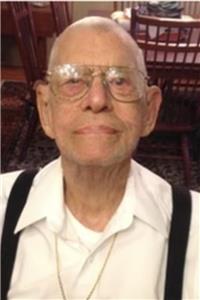 For 103 years, Edward Louis Dence lived with an unmatched talent for storytelling, a knack for playful teasing, and an outpouring of total generosity for everyone around him. In the best of times, he was a handful - but his aptitude for humor was incomparable, and knowing him left everyone inarguably better than they'd been before (albeit, a bit confused about whether the "German" he'd more frequently started speaking in his later years was accurate or not). Ed lived in Philadelphia for the entirety of his life, and contributed a history to the city that wouldn't have otherwise existed without him. He proudly served in the US Navy during World War II aboard the USS Mona Island. After the war he had several jobs, retiring from NFL Films in 1983. He was a longtime member of J H Brown Lodge of the Masons, and a "Hillbilly" Shriner.
For 103 years, Edward Louis Dence lived with an unmatched talent for storytelling, a knack for playful teasing, and an outpouring of total generosity for everyone around him. In the best of times, he was a handful - but his aptitude for humor was incomparable, and knowing him left everyone inarguably better than they'd been before (albeit, a bit confused about whether the "German" he'd more frequently started speaking in his later years was accurate or not). Ed lived in Philadelphia for the entirety of his life, and contributed a history to the city that wouldn't have otherwise existed without him. He proudly served in the US Navy during World War II aboard the USS Mona Island. After the war he had several jobs, retiring from NFL Films in 1983. He was a longtime member of J H Brown Lodge of the Masons, and a "Hillbilly" Shriner.
WILLIAM JON MCKIVOR (1940-2021)
Jeff Rock alerted me to the passing of dealer and Conder token specialist Bill McKivor. Thanks. Here's his published obituary. -Editor
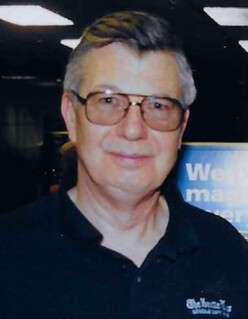 Bill was a collector all his life. Of cars, tokens, historical memorabilia. But what he really loved collecting were stories. His friends and family remember him as someone who always had an interesting, funny or historical story to fit every occasion. And over his life, he sprinkled these stories into his work as a radio announcer, into talks he gave for his various clubs and into everyday conversations he'd have with just about anyone who was interested.
Bill was a collector all his life. Of cars, tokens, historical memorabilia. But what he really loved collecting were stories. His friends and family remember him as someone who always had an interesting, funny or historical story to fit every occasion. And over his life, he sprinkled these stories into his work as a radio announcer, into talks he gave for his various clubs and into everyday conversations he'd have with just about anyone who was interested.
He was a man who threw himself whole-heartedly into whatever he did, and this was certainly true in his work life. He started his 50-year career in the newspaper business at age 9, selling newspapers on a Wallingford street corner until he was old enough to have a paper route... and then two paper routes. As an adult, he became a district manager and then branch manager in the circulation department at the Seattle Post Intelligencer. Later, at the Seattle Times he directed the shift from an afternoon circulation to a morning run.
At 60 he retired from the Times and started his own business selling British tokens. He used his knack for storytelling to give his customers historical context about how the tokens were used before there was a national British currency. He trekked to England every fall to attend conferences and give talks.
CONDITION CENSUS PITT FARTHING DISCOVERED
Newman Numismatic Portal Project Coordinator Len Augsburger provided the following press release on a new discovery by an NNP user. Thanks - nice find! -Editor
Condition Census Pitt Farthing Discovered in UK
A Newman Numismatic Portal (NewmanPortal.org) user from the UK recently reported the discovery of a high-grade Pitt farthing, which researcher Chris McDowell ranks as the fourth finest known. Listed among colonial issues in the Guide Book of United States Coins, the Pitt tokens commemorate William Pitt's efforts to repeal the 1765 Stamp Tax. The obverse legends read THE RESTORER OF COMMERCE 1766 / NO STAMPS and AMERICA, while on the reverse THANKS TO THE FRIENDS OF LIBERTY AND TRADE encircles the border. Little is known of their origin, which was more likely in Europe than America.
QUERY: NUMISMATIC POSTCARD PRINTER SOUGHT
Len Augsburger also passed along this query from another Newman Numismatic Portal user. Can anyone help? -Editor
South American Numismatic Postcard Printer
A Newman Portal user forwarded these images of a 1905 postcard featuring a set of South African coinage from 1890s. It is believed the card embossing was performed by Hugo Semmler of Magdeburg (Germany) as this matches other known examples of his work. The addressed side ("back" in post card collector parlance) is more of a mystery and seems to have been printed in South America. The working theory is that Semmler printed only the front site and then distributed these cards around the world, where local printers finished the cards. Can an E-Sylum reader identify the printer "A.H.H." noted here, perhaps from Uruguay?
VIDEO: COLLECTORAMA COIN SHOW SECURITY
These are selections from the David Lisot Video Library that feature news and personalities from the world of coin collecting. David has been attending coin conventions since 1972 and began videotaping in 1985. The Newman Numismatic Portal now lists all David's videos on their website at:
https://nnp.wustl.edu/library/multimediadetail/522852
Here's one on coin show security at the Collectorama show. -Editor
Bad Guys Not Welcome at Collectorama Coin & Currency Show 2021.
VIDEO: 3:45.
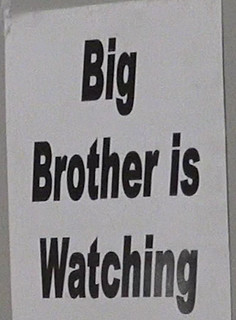 Angelo Betancourt, Special Services, David Lisot, CoinTelevision.com. February 18, 2021.
Angelo Betancourt, Special Services, David Lisot, CoinTelevision.com. February 18, 2021.
Security at a coin convention is very important for both the dealers and collectors. Theft and shoplifting can occur, mask enforcement can be necessary, and criminals need to be prevented from coming in. The Collectorama Show has some of the best security in the coin business. There are plain clothed officers walking the floor, constant video surveillance and recording, and strict entry and exit procedures. Learn what is important to protect yourself at a coin show.
An excerpt of the video is available for viewing on the Coin Television YouTube Channel at:
https://youtu.be/Vu-yXMuK6Ms
COIN DESIGNER DORA DE PEDERY-HUNT
J.N.T. LEVICK'S BIRTHDATE
American Numismatic Biographies author Pete Smith asked for assistance in determining the birth date of American numismatic giant J. N. T. Levick. Readers came through again with some great information, although we're still in some doubt. -Editor
Julia Casey writes:
"I've been trying to tackle biographical data on J.N.T. Levick and now am beginning to suspect he did not want the details of his early life known! I think he may have intentionally given different birth locations and years to government authorities.
"I also came across this fun little passage from when he was summoned for jury duty in the trial of Mary Alice Fleming Livingston (see: "The sensational clam chowder murder of 1895"
https://ephemeralnewyork.wordpress.com/tag/mary-alice-fleming-livingston/
)
"This is from The Journal (New York, May 15, 1896) and can be found on the Library of Congress / Chronicling America database:
https://www.loc.gov/resource/sn84031792/1896-05-15/ed-1/?sp=9&r=0.439,-0.03,0.298,0.172,0
."
MAY 2021 PAN SHOW SCHEDULE
The Pennsylvania Association of Numismatists show is coming up fast. The expanded bourse floor is nearly sold out; PAN has long been one of the top regional shows in the country, and has been going strong despite the last year's pandemic. Here's a note about the show from the April 2021 PAN eNews, followed by the show schedule. -Editor
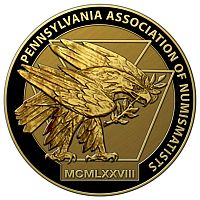 Covid guidelines will be still be required
including proper mask wearing, temperature
checks, social distancing, and hand
sanitizing. Dealing with the pandemic for
more than a year, we are confident that most
people don't need floor markings for
common sense distance or aisle directions
arrows, etc. You know the drill. We will
not require the filling out of a release form
that was part of our last Fall coin show. You
will still be required to register if you are not
on our mailing list. If you receive our
mailed yellow postcard, bring it along then
that is all you will need to enter.
Covid guidelines will be still be required
including proper mask wearing, temperature
checks, social distancing, and hand
sanitizing. Dealing with the pandemic for
more than a year, we are confident that most
people don't need floor markings for
common sense distance or aisle directions
arrows, etc. You know the drill. We will
not require the filling out of a release form
that was part of our last Fall coin show. You
will still be required to register if you are not
on our mailing list. If you receive our
mailed yellow postcard, bring it along then
that is all you will need to enter.
Many people have received the vaccine. Since most of our dealers and older attendees are vaccinated, the situation will be much better than our pre-vaccine last October show. Even that went very well considering the circumstances.
If you are a PAN member, you are entitled to 1-hour early access onto the show floor. It is not too late to join!
NOTES FROM E-SYLUM READERS: APRIL 25, 2021
CNA Acquires Greater Cincinnati Numismatic ExpositionCincinnati Numismatic Association President David G. Heinrich passed along this announcement. -Editor
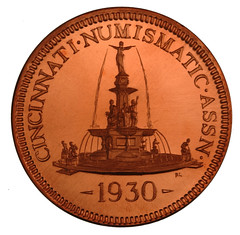 Cincinnati Numismatic Association (CNA) is pleased to announce that it has acquired the Greater Cincinnati Numismatic Exposition (GCNE) from show owner Paul Padget. CNA will take over ownership, management, and operations of the GCNE for its 38th annual event this year. CNA Governor Jeffrey Daniher said, "Paul Padget did a superb job founding and shepherding the tri-state's best coin show. The Cincinnati Numismatic Association looks forward to building on this base with future additions of educational content and programming to be determined." Mr. Padget, serving as honorary chairman this year, will also have a table at the
show.
Cincinnati Numismatic Association (CNA) is pleased to announce that it has acquired the Greater Cincinnati Numismatic Exposition (GCNE) from show owner Paul Padget. CNA will take over ownership, management, and operations of the GCNE for its 38th annual event this year. CNA Governor Jeffrey Daniher said, "Paul Padget did a superb job founding and shepherding the tri-state's best coin show. The Cincinnati Numismatic Association looks forward to building on this base with future additions of educational content and programming to be determined." Mr. Padget, serving as honorary chairman this year, will also have a table at the
show.
In recent years, the GCNE has been held at the Sharonville Convention Center where it will return for public hours Friday, July 30 and Saturday, July 31 from 10am-6pm. Admission is free and open to the public. Early bird admission is available for $40 during dealer set-up hours of 3-7pm on Thursday, July 29. The show will include 125 dealer tables, some of which are still available. Please contact bourse chair Dave Heinrich at cincycoins@gmail.com for more information.
From its humble beginnings at the formerly renowned Drawbridge Inn in Ft. Mitchell, KY the GCNE has grown to be Cincinnati's most popular annual coin and currency convention. CNA plans to maintain the high quality of the show and expand it in the future.
Congratulations, and good luck with the show. -Editor
For more information, see:
http://cincinnaticoinclub.org/
Other topics this week include exhibiting holed coins, the B. Max mehl building, and George Clinton. -Editor
QUERY: "1.G." ON MARYLAND COLONIAL NOTE
An E-Sylum reader writes:
"I recently purchased a Maryland colonial note from the April 10, 1774 issue. The denomination is 2/9 of a dollar, which the note says is equal to 1 shilling. The right side vertical margin for all notes in the issue lists the denomination. For this particular note the denomination is listed as "1. G."
Colonial Maryland April 10, 1774 2-9 dollar"The question is whether anyone might know the literal meaning of the "1. G." I thought the G might stand for "Groat" but that doesn't make sense as a Groat is 4 pence while a shilling is 12 pence. I tried Google without success. I thought one of the readers might know. Thanks in advance for your help."
Good question. I was a little confused as I didn't see the "1 shilling" or "1.G." in this image of the note from the Eric P. Newman collection. -Editor
VOCABULARY TERM: DISPLACEMENT
Here's another entry from Dick Johnson's Encyclopedia of Coin and Medal Terminology. -Editor
Displacement. The result of metal movement within a struck blank caused by the configuration of the die and the metal mass seeking to fill the nearest cavities of the die. The movement of the mass is called metal flow, displacement is the result of this plastic flow of solid material. There is some displacement throughout the blank (if it is one homogeneous mass, not clad) but it is obvious to observe as surface displacement, which forms the design, the modulated relief of the contours and cavities of the die.
GEORGE M. PARSONS (1818-1895)
Here's another entry from the online draft of John Lupia's book of numismatic biographies. Thanks! This is an excerpt with the full article and bibliography available online. This week's subject is collector George M. Parsons. -Editor
Parsons, Hon. George M. (1818-1895), Columbus Ohio multi-millionaire. He was married to Jane Parsons. They had six children : Elizabeth (1846-), Amelia (1850-), Jane (1852-), Gustavus (1855-), Mary (1857-), and Anna (1860-). In 1860, he lived in Montgomery Township, Franklin County, Ohio, with an estate estimated at $550,000. However, the 1870 Census states his residence was in Columbus, Ohio, with an estate estimated at $375,000.
He died at the age of seventy-seven on September 19, 1895 at his residence in Columbus, Ohio. One of his daughters is Princess De Lynar of Dresden, Germany.
His first coin and medal collection comprising 508 lots was sold by Edouard Frossard, 47th sale, at Leavitt, on October 16, 1885. Adams rating B+. His second coin and medal collection of 2,756 lots was sold posthumously by Henry Chapman, 24rd sale, at Davis & Harvey, on June 24-27, 1914. Adams rating A . Martin Gengerke lists this auction has having 2,765 lots.
HARVEY STACK'S NUMISMATIC FAMILY, PART 94
The latest article in Harvey Stack's blog series discusses several landmark collections sold by the firm in 1984. Thanks. -Editor
In the spring of 1984 Stack's was pleased to continue our offerings of important numismatic collections. As noted, our March sale contained Part 2 of the Americana collection formed by the late John L. Roper of Norfolk, Virginia. This sale, like our first offering, was of great historical importance and featured important Colonial currency, Obsolete currency, United States currency, Confederate items, encased postage stamps, Hard Times and Civil War tokens. As with the December 1983 catalog of colonial coins, these items traced the monetary history of our country, from its earliest days. The importance of Mr. Roper's collection was shown by the fact that when the Smithsonian created an exhibit in honor of 200 years of banking in America, they asked John L. Roper to borrow some of his notes so that the exhibit could be complete. Like the colonial coins offered in 1983, many of the lots in this auction could be traced to famous collections sold decades before.
STEPHEN ALBUM RARE COINS AUCTION 40
Here's the press release for Stephen Album Rare Coins upcoming Auction 40. -Editor
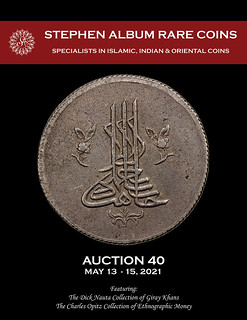 Stephen Album Rare Coins will hold its Auction 40 on May 13-15, 2021 at its offices in Santa Rosa, California. The Auction is made up of an even 3,100 lots of Ancient, Islamic, Chinese, General World, Ethnographic Items, and Indian Coins.
Stephen Album Rare Coins will hold its Auction 40 on May 13-15, 2021 at its offices in Santa Rosa, California. The Auction is made up of an even 3,100 lots of Ancient, Islamic, Chinese, General World, Ethnographic Items, and Indian Coins.
Two featured collections include The Dick Nauta Collection of Giray Khans and The Charles Opitz Collection of Ethnographic Money. The Giray Khans offerings include some extremely rare and possibly unique pieces, one of which is featured on the cover of the printed auction catalog. (See the description of lot 607 below). The Charles Opitz Collection (or rather selections from, not the entire collection) includes roughly 200 lots of rarely encountered ethnographic money. Opitz is the author of Odd and Curious Money: Descriptions and Values. Additional pieces will be offered in the subsequent auction.
As usual the sale is rounded out with a variety of offerings from across all categories and price levels.
Some highlights from the sale follow:
CLASSICAL NUMISMATIC GROUP AUCTION 117
Here's the press release for the CNG spring sale. Some beautiful coins here. -Editor
Classical Numismatic Group, LLC is proud to present CNG Feature Auction 117, a Live Online Sale closing Wednesday & Thursday, 19-20 May 2021, from our Lancaster, Pennsylvania office. This sale offers 1158 lots with a presale estimate of $2.15 million.
Our annual spring sale features Greek, Celtic, Oriental Greek, Central Asian, Roman Provincial, Roman Republican and Imperatorial, and Roman Imperial coinage. Additionally, there are featured selections of Byzantine, Early Medieval and Islamic, Early Dated Coinage, World coinage and medals, United States coinage and medals, British coinage and medals, antiquities, and reference books.
CNG 117 is highlighted by a number of collections and individual rarities, which make up the majority of coins on offer:
WAYNE'S NUMISMATIC DIARY: APRIL 25, 2021
The evening of Tuesday April 20, 2021 I was at the scene of a long-awaited event - the return of in-person dinners for my Northern Virginia numismatic social group, Nummis Nova. While a few of our regulars are still awaiting to be fully vaccinated, eight vaxxed members and a guest came out for our first meeting since the pandemic began just over a year ago.
Robert Hoppensteadt was our host and he'd made a reservation at Delia's Mediterranean Grill & Brick Oven Pizza in Alexandria. As it happened, this was the site of our last in-person event in February 2020. So we were picking up right where we'd been before we were so rudely interrupted.
I arrived early and waited outside where I could breathe easier without my mask. A masked young man approached me and asked if I was there for the coin meeting. I introduced myself and put on my mask. It was Garrett Prenda, Wayne Herndon's guest for the evening. We'd never met before, but he works weekends at Wayne's warehouse with my sons Chris and Tyler, picking and shipping orders from his Wizard Coin Supply website. We had a good conversation about coin collecting and how he ended up with the job. He'd gone to the Indeed website to check local job listings, and the first to pop up was an opening at Wayne's business. As a coin collector, Garrett jumped on it immediately. What are the odds of that?
Next to arrive was Wayne himself, loaded down with three boxes of supplies ordered by fellow members. We helped him carry them in. Dave Schenkman and Eric Schena were already seated at our table. Soon to arrive were Chris Neuzil, Julian Leidman, and Steve Bishop. Masks were required when entering and walking about the restaurant. I didn't get any masked photos but took some unmasked shots later. My back was to the rest of the restaurant, but it was nearly deserted except for our group.
THE BOOK BAZARRE
THE MOST INFLUENTIAL PEOPLE IN NUMISMATICS
In our excitement one topic that didn't come up at our Nummis Nova meeting this month was the recent Coin World special issue on The Most Influential People In Numismatics 1960-2020. I was quite honored to be included, along with fellow Nummis Nova regulars Roger Burdette and Julian Leidman, as well as Numismatic Bibliomania Society stalwarts Len Augsburger, Joel Orosz and David Sundman. Also included were an amazing array of regular E-Sylum contributors and supporters. I've always described our discussions as being like a weekly cocktail party with top numismatists from around the world, and this list is confirmation of that.
The issue was in celebration of Coin World's 60th anniversary. Here's how Managing Editor Bill Gibbs described the effort. -Editor
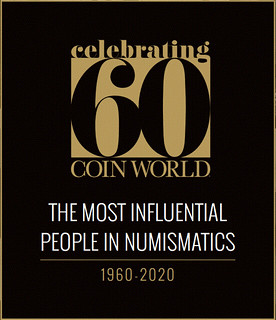 In devising the original list of several
hundred candidates, we decided on a couple
of rules: One, the candidates had to be living;
Two, current Coin World staff members were
ineligible, though I can think of several who
would be most deserving of making the final
cut; Three, the final list would be winnowed
down to 100; and Four, a candidate could be
anyone who has had an effect on the hobby
(while collectors and dealers dominate the
list, some of the candidates serve the hobby
in other ways, such as designing the coins
we collect). In its final form, we ended up
with 96 profiles, with a few candidates either
choosing not to participate or proving impossible to contact.
In devising the original list of several
hundred candidates, we decided on a couple
of rules: One, the candidates had to be living;
Two, current Coin World staff members were
ineligible, though I can think of several who
would be most deserving of making the final
cut; Three, the final list would be winnowed
down to 100; and Four, a candidate could be
anyone who has had an effect on the hobby
(while collectors and dealers dominate the
list, some of the candidates serve the hobby
in other ways, such as designing the coins
we collect). In its final form, we ended up
with 96 profiles, with a few candidates either
choosing not to participate or proving impossible to contact.
PUBLIC AND PRIVATE IN COIN PRODUCTION
An article by David Yoon on the American Numismatic Society Pocket Change blog discusses the sometimes blurry distinction between coins and tokens. Here's an excerpt. -Editor
There is a commonly encountered conventional distinction between coins and tokens such that coins are produced and issued by governments as legal tender, whereas tokens are produced and issued by private businesses and derive their value only from their redemption by the issuer. This distinction is useful for many purposes, but like most definitions, it runs into problems in situations where the real world turns out to be more complicated than the unstated assumptions that underlie the distinction.
One of these assumptions is that official money is actually produced and issued by governments. Leaving aside the very substantial problem of banknotes and other forms of non-metallic money, this assumption fits fairly well with the experience of coinage in twentieth-century practice in major economies, which of course is the formative experience of many recent numismatic writers, but it is not universally true historically.
COPPER 1794 DOLLAR PATTERN PUBLICITY
Many mainstream publications this week picked up the story of the sale of the Judd-18 copper 1794 dollar pattern. Here's the original press release with quotes from Heritage Auctions cataloger Jacob Lipson. -Editor
The first dollar coin struck at the fledgling U.S. Mint in 1794, an experiment in copper which would become the pattern for more valuable silver versions minted later, sold for $840,000 at Heritage Auctions Friday, April 23. Referred to as the "No Stars Flowing Hair Dollar" opened at $312,000 when it was put up during a live auction Friday evening. In less than a minute, intense bidding quickly pushed the coin beyond expectations it would sell between $350,000 and $500,000.
The 230-year-old dollar has been off the market for 20 years, residing in the private collection of Bob R. Simpson, part-owner of the Texas Rangers baseball team and a lifelong Texas energy executive. Simpson purchased the coin in 2008. Simpson has been selling highlights from his collection through Heritage Auctions, which have so far totaled more than $54 million.
A CENTURY OF SILVER DOLLARS
An article on the U.S. Mint website reviews 100 years of silver dollar coinage. Here's an excerpt. -Editor
This year marks the 100th anniversary of completion of coinage of the Morgan Dollar and the 100th anniversary of commencement of coinage of the Peace Dollar. Essentially, it's the centennial of the transition between minting two of the most famous coins issued by the United States Mint. This year also marks the 50th anniversary of the silver coin that would follow: the Eisenhower Dollar. These three coins, spanning 100 years—from the first Morgan Dollar in 1878 to the final Eisenhower Dollar in 1978—share a connection through history and legacy.
COIN FIND LEADS WAY TO TUBMAN SITE
Arthur Shippee, Len Augsburger, Pablo Hoffman, Anne E. Bentley and others forwarded this story about the discovery of a coin near a site believed to be the onetime home of abolitionist Harriet Tubman. Thanks, everyone. The article doesn't state the denomination, but it must be a half dollar. Has anyone tried to determine the obverse die? -Editor
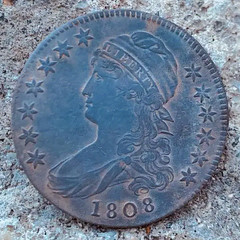 Archaeologist Julie Schablitsky found the coin with her metal detector along an old, abandoned road in an isolated area of Maryland's Eastern Shore. She dug it out of the ground and scraped off the mud.
Archaeologist Julie Schablitsky found the coin with her metal detector along an old, abandoned road in an isolated area of Maryland's Eastern Shore. She dug it out of the ground and scraped off the mud.
She hadn't been finding much as she and her team probed the swampy terrain of Dorchester County last fall searching for the lost site where the famous Underground Railroad conductor Harriet Tubman lived with her family in the early 1800s.
She'd been frustrated that there had been no hint that she was anywhere near the home of Tubman's father, Ben Ross. But as she cleaned the coin, the profile of a woman with flowing hair, and wearing a cap that said, "Liberty," emerged. At the bottom was the date: 1808.
Tuesday morning state and federal officials announced that Schablitsky, guided in part by the coin, believes she has found the site where Tubman lived with her parents and several siblings during her formative teenage years before she escaped enslavement.
DETECTORIST UNEARTHS FREEDMAN'S BADGE
The Post and Courier of Charleston published a great article about a metal detectorist's recent discovery of a rare Charleston freedman's badge. Congratulations to John Kraljevich on making the purchase. -Editor
A couple of weeks ago at a Starbucks in Fort Mill, John Kraljevich was joined by a man with something to sell.
The man had recently procured a precious relic from a friend. It was an oval badge made of copper with a small hole at the top to accommodate a string or ribbon. The string was missing, of course, and the hole was packed with hardened dirt because the item had spent more than 200 years underground.
Kraljevich noticed the word "FREE" embossed upon an image of a liberty cap on a pole. Along the edge were the partially abraded words "CITY OF CHARLESTON" and etched beneath the Phrygian cap was the number 147. Freedman's badges were made for free Black people in Charleston in the late 1700s, all were required by law to register with the Office of the City Clerk and obtain a badge, for which they paid 5 shillings.
MEDALLIC ART OF KATHARINE LANE WEEMS
An article by Jesse Kraft on the American Numismatic Society Pocket Change blog examines the work of Katharine Lane Weems. -Editor
While people today may not recognize her name, the career of Katharine Lane Weems (née Katharine Ward Lane) paralleled those of many well-known sculptors of the 20th century.
Born into a well-to-do Boston family in February 1899, she enjoyed a fine education. Her exposure to art no doubt originated through her father—Gardiner Martin Lane, president of the Board of Trustees of the Museum of Fine Arts, Boston. She was named after her aunt, the watercolorist Katharine Ward Lane (d. 1893). In the course of training, she worked under Charles Grafly, George Demetrios, and studied at the summer studios of Anna Hyatt Huntington in Connecticut. As a sculptor, she tended to focus on animal forms. Her work won her a bronze medal at the Philadelphia Sesquicentennial Exposition in 1926, and the prestigious Widener Gold Medal from the Pennsylvania Academy of the Fine Arts the following year. In 1947, she married architect Fontaine Carrington "Canny" Weems. In 1985, she published her memoirs, Odds Were Against Me. If you travel to Boston, it would be difficult not to see Weems' work, either in public or exhibited in the MFA Boston—where she donated her entire estate after her death in 1989, and endowed the position of Senior Curator of American Decorative Arts and Sculpture.
EXHIBIT: IN THE HEYDAY OF ENGLISH GRAMMAR
For the bibliophiles among us, here's an excerpt from a New Yorker article about a new exhibit at the Grolier Club of works from the library of Bryan A. Garner: "Taming the Tongue: In the Heyday of English Grammar (1713-1851)." -Editor
Garner's success—he is a highly sought-after speaker among lawyers and lexicographers—has enabled him to indulge his passions as a bibliophile and an antiquarian. A selection of sixty-eight items from the Garner Collection is on view at the Grolier Club (47 East Sixtieth Street, through May 15th), with a sumptuous hardcover limited-edition catalogue that serves as a companion guide. To enter the exhibit, titled "Taming the Tongue: In the Heyday of English Grammar (1713-1851)," via a discreet door on the second-floor landing of a stairwell at the Grolier, is to climb aboard the Grammarama ride at Disneyland for Nerds.


